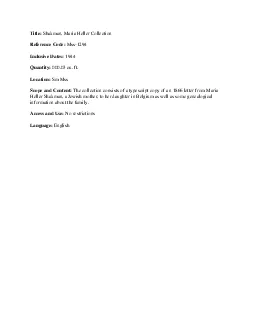PPT-PRODUCTION Mrs. M . Maria Jessica
Author : mia | Published Date : 2023-11-05
PG amp Research Department of commerce Bon Secours college for women Thanjavur CONTENTS MEANING DEFINITION CLASSIFICATION OF LARGE SCALE ECONOMIES TYPES OF
Presentation Embed Code
Download Presentation
Download Presentation The PPT/PDF document "PRODUCTION Mrs. M . Maria Jessica" is the property of its rightful owner. Permission is granted to download and print the materials on this website for personal, non-commercial use only, and to display it on your personal computer provided you do not modify the materials and that you retain all copyright notices contained in the materials. By downloading content from our website, you accept the terms of this agreement.
PRODUCTION Mrs. M . Maria Jessica: Transcript
Download Rules Of Document
"PRODUCTION Mrs. M . Maria Jessica"The content belongs to its owner. You may download and print it for personal use, without modification, and keep all copyright notices. By downloading, you agree to these terms.
Related Documents














